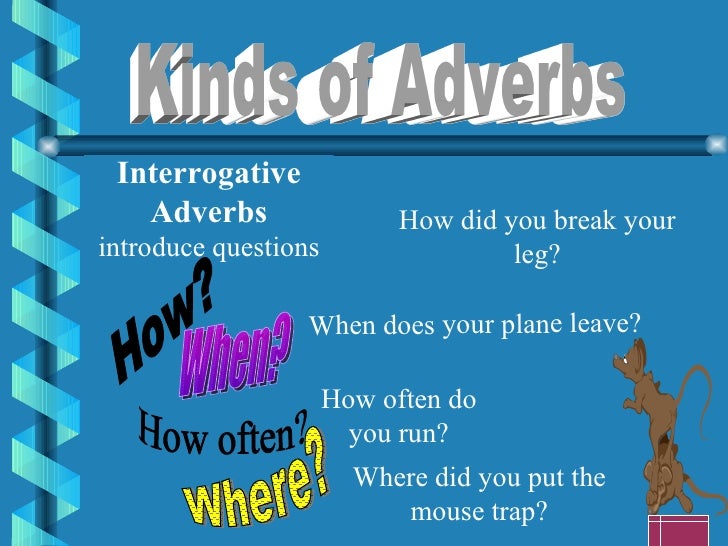

Nouns can name feelings or ideas as well. The noun: Nouns are words for people, places and things. Need writing help? offers an Editing Service starting at only $10. I am jumping I will jump tomorrow I jumped yesterday. Verbs also convey the time of the action, such as whether it is past or present. Verbs can also describe a state of being, such as "is" or "has." Notice that verbs change depending on who is doing the action: I jump, but he jumps. It can be an active action such as run, jump, or take. The verb: Verbs are words that name an action. Here are the definitions of the eight parts of speech and links to pages that give more details about them. The 8 parts of speech are: verbs, nouns, adverbs, adjectives, pronouns, prepositions, conjunctions, and interjections.

By knowing the 8 parts of speech, you can recognize when there is a problem of verb agreement, or a run-on sentence, or a misused pronoun. How could my mechanic fix my car if he didn't know that the problem was the carburetor, not the fuel pump? The 8 parts of speech are like that. New! Try our quiz on the 8 parts of speech Need help with APA style? Check out our page on How to Write an APA Essay Click here for a printable 8 Parts of Speech pdf file. The subject (actor) in a sentence is a noun or noun phrase. Generally, in a sentence, someone/something does something. Every word in a sentence can be defined as one of the 8 parts of speech. The 8 parts of speech are: noun, verb, adjective, adverb, pronoun, preposition, conjunction, and interjection. Hint: If a sentence beginning with a there is or there are construction can be rewritten without the word there, you are working with the expletive form of the word.The 8 parts of speech is a way to describe the function of words in the English language. You can tell the first example expresses more drama, right? Used sparingly, expletive constructions with there is or there are can be titillating. There are explosives hidden under the railway bridge! (Delayed Subject - explosives)Įxplosives are hidden under the railway bridge! ( There is omitted to get to the point.) Here’s an example sentence demonstrating these structures:

Authors like to use it like a bit of “seasoning” to keep readers tuned in. This occurs because expletives are used to postpone the subject to build a little suspense for the reader. Mind you, starting a sentence with these constructions will lead to wordy sentence writing, and they’re usually too passive for most written compositions. An expletive is an “extra word” not grammatically related to the rest of the sentence.

In these contexts, the word there is classified as an expletive. The chart can help, but also pay close attention to specific grammatical constructions when there is or there are start the sentence.


 0 kommentar(er)
0 kommentar(er)
